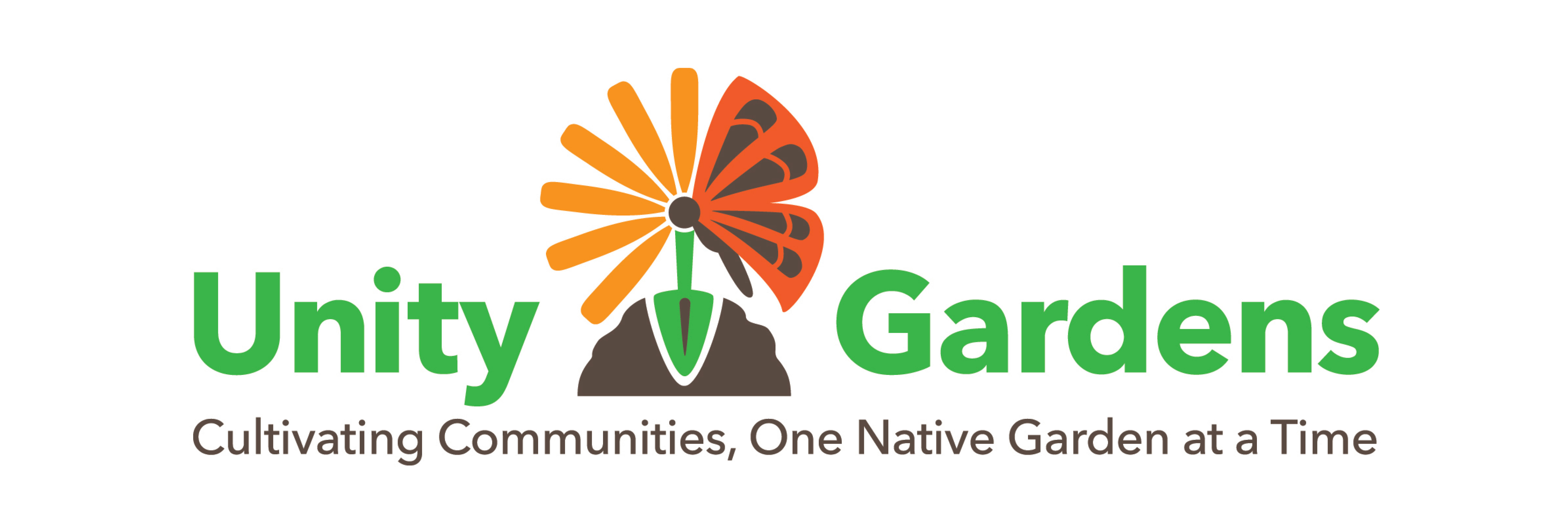
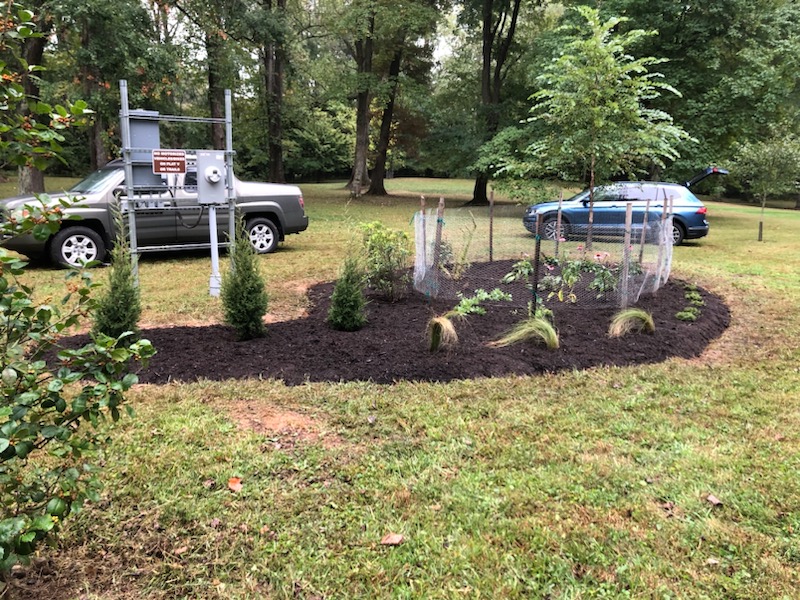
Amberley Community Association
In preparation for their planting day, the team began by prepping the bed in spring and then tilling in 10 bags of leaf grow in the fall with the help of a rented tiller. On the planting day, they utilized an additional 3 bags of leaf grow to mix into the holes. Due to anticipated rain, the planting occurred over two days, with 4 volunteers working each day. Concerned about deer browsing, especially given the large local herd, they decided to erect a deer fence around some of the more vulnerable plants to ensure their successful establishment despite the browsing threat. This proactive measure reflects the team’s dedication to ensuring the garden’s success and showcases their thoughtful approach to mitigating potential challenges.
Bayside Bloomers Garden Club
The Bayside Bloomers Garden Club embarked on an extensive project to create a conservation-focused garden on Anne Arundel County property, overcoming challenges like dense invasive plant growth and extensive soil preparation. With the help of various community volunteers, including groups like the Good Neighbors Group of Severna Park, Maryland Reentry Resource Center, and Boy Scout Troop #918, along with commercial donors and local businesses, the project thrived. Volunteers worked tirelessly over two months, enduring hot summer days, to prepare the beds and plant 66 native shrubs and numerous trees, supported by generous donations of compost, mulch, and other supplies. Publicity efforts, including articles in local media and social media posts, garnered widespread attention and education about native plants and conservation. The resulting garden not only beautified the community but also inspired further community engagement, with church members contributing to additional property improvements. The project’s success has sparked enthusiasm for native gardening and sustainability, fostering a spirit of environmental stewardship among participants and beyond.
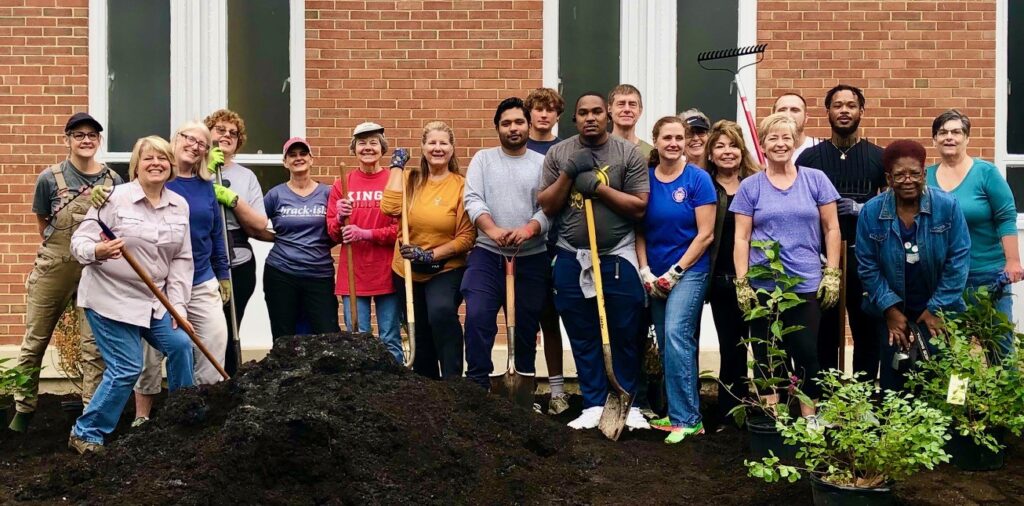
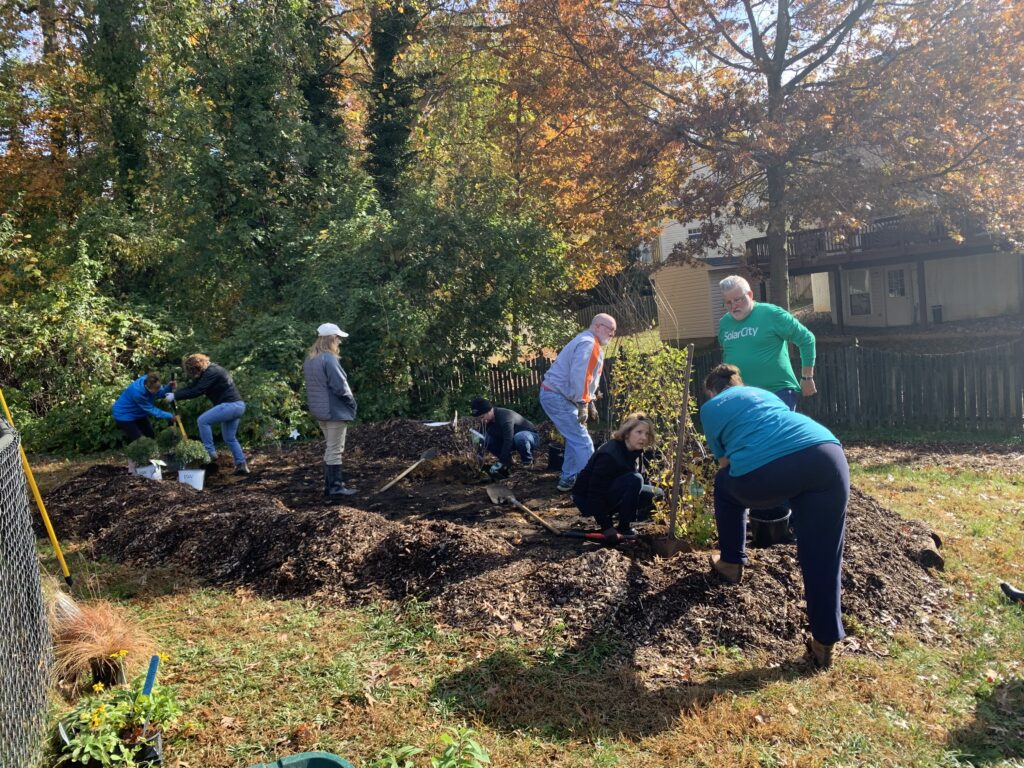
Brenwoode Sensory Garden
The community of Brenwoode Road in Annapolis embarked on an exciting project to create a conservation, meditation, and sensory garden on Anne Arundel County property adjacent to a storm management pond. With permission from Anne Arundel County Public Works, the area was designated, and the garden was carefully planned to include native plants that would not only support wildlife but also serve as a serene gathering spot for neighbors. A collaborative effort brought together residents, WSA staff, Unity Gardens representatives, and volunteers from outside the community for three engaging sessions focused on preparing and planting the garden. Participants were equipped with information about proper planting techniques, the garden design, and the individual plants, all while enjoying cookies, coffee, and camaraderie. Beyond the garden’s physical creation, the project fostered a deeper sense of community among Brenwoode residents, bridging communication gaps and fostering connections that transcended the challenges posed by the pandemic. Moving forward, the community is enthusiastic about maintaining their newfound sense of unity and continuing to educate and engage neighbors through avenues such as their new Facebook page, ensuring the garden’s legacy as a source of beauty, learning, and camaraderie for years to come.
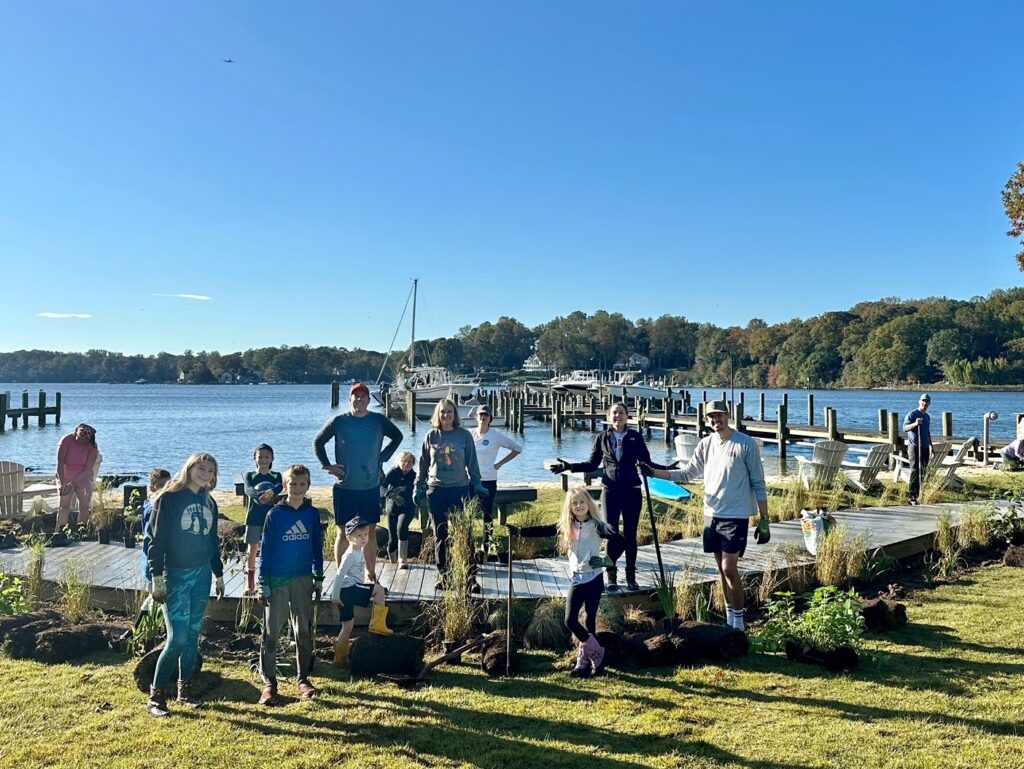
Colchester on the Severn Community Association
Following the grant approval, the community swiftly coordinated with a local native plant landscape professional to receive the majority of the plants in early September, ensuring their safekeeping until planting day. In preparation, they rented a sod cutter to clear the planting area of thick turf grass, streamlining the process for volunteers. On the designated Saturday, October 21st, a lively group of approximately twenty individuals gathered to plant around 250 plants within a brisk two-hour timeframe. Despite some volunteers being unable to attend, their commitment remained strong, with additional help enlisted after planting day to complete remaining tasks such as planting the remaining 50 plants and spreading mulch and sand. The community’s collective effort resulted in a transformative new look for the beach, fostering a sense of pride and anticipation for the plants to flourish and fulfill their ecological roles in reducing erosion, managing water, and supporting native wildlife.
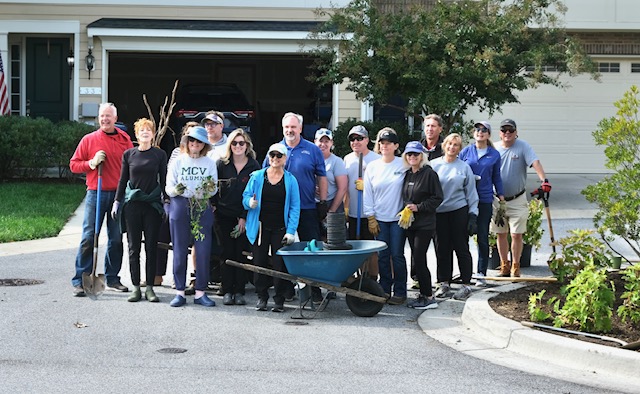
Enclave on Spa Homeowner’s Association
On a brisk autumn morning, the community gathered on October 8th at 10:00 a.m. to embark on their gardening endeavor, breaking into three teams after a brief lesson on proper planting techniques. With the guidance of Laurene Parlatore and the timely delivery of plants from Patuxent Nursery, generously funded by residents’ donations, the teams swiftly completed the planting of 176 trees, shrubs, and perennials in just under three hours. Prior to the planting day, reminder notices were circulated via email and Facebook, ensuring a strong volunteer turnout. Additionally, informative photo montages of the chosen plants, including their names and bloom times, adorned signs around the planting areas, sparking curiosity among passersby. Despite many volunteers being new to gardening, their eagerness to learn about native plants and contribute to the project’s maintenance was palpable. The collective efforts of the community, from their diligent watering routines to their newfound enthusiasm for the garden’s beauty, underscored the project’s success. An unexpected outcome emerged as several homeowners expressed interest in replanting their front yards with native plants, further exemplifying the project’s positive impact and fostering a spirit of environmental stewardship within the community.
enSprout + Crofton Woods Elementary School Front Entrance Abandoned Garden Project
The planting day at the front of the school proved to be a delightful and rewarding experience for the student volunteers, who exhibited remarkable enthusiasm and teamwork throughout the process. Working in small groups, they eagerly dug holes, amended the soil, and took particular joy in watering the newly planted garden. Thanks to the support of Unity Gardens, the students gained valuable insights into the ease of growing native plants, their ecological benefits, and their ability to enhance the aesthetic appeal of their environment. The sight of the garden greets them daily as they enter and exit the building, serving as a tangible reminder of their hard work and contribution to beautifying their school. Overall, the project exemplifies the students’ commitment to environmental stewardship and their enthusiasm for creating a more vibrant and welcoming school campus.
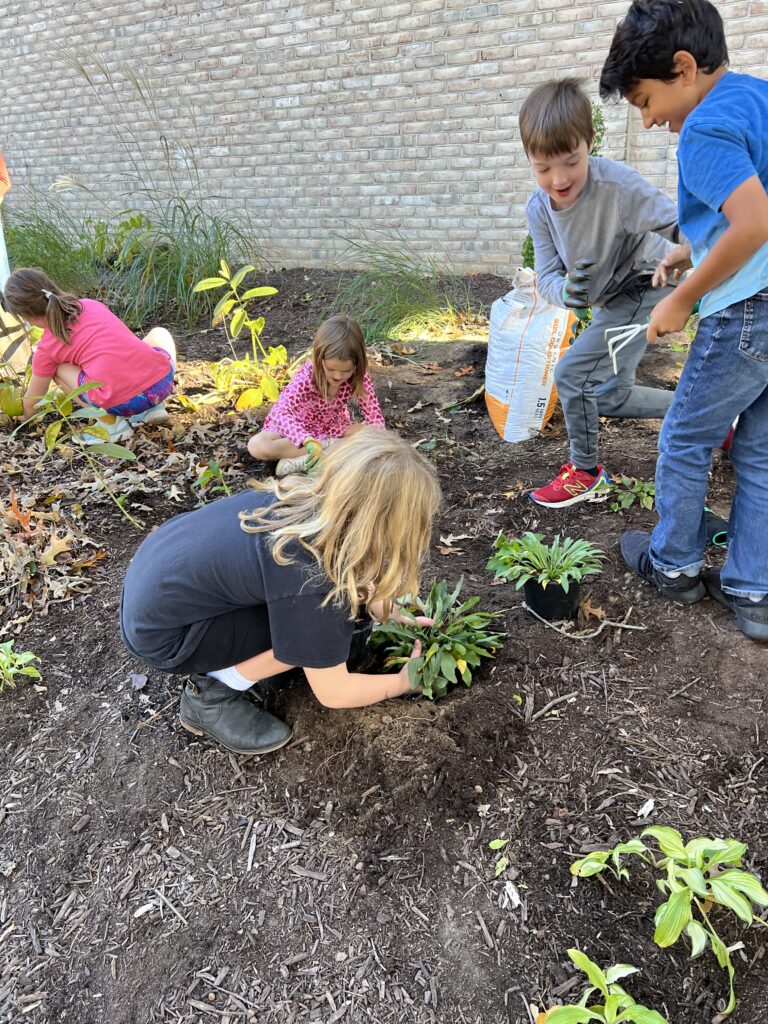
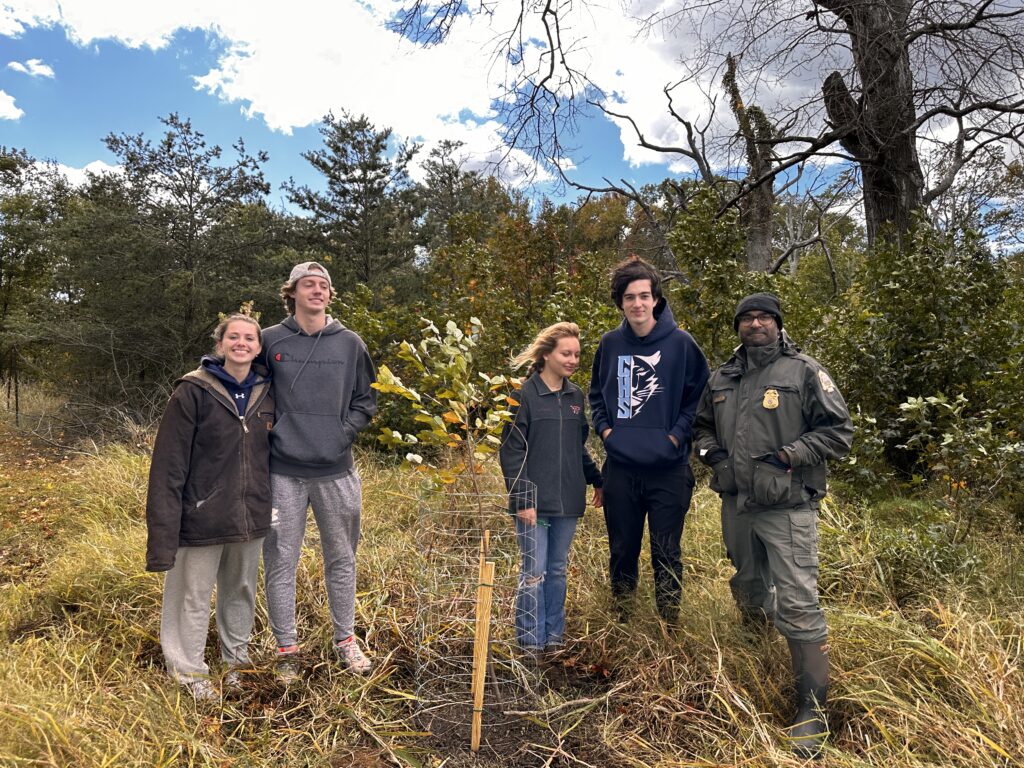
Ft Smallwood Park Resilient Reforestation Project
The implementation of the garden project at Ft. Smallwood Park proved to be both successful and enjoyable, with eight enthusiastic volunteers contributing to its realization. Led by Jeff Reagan, who enlisted the help of his daughters to recruit student volunteers from Chesapeake High School, the planting day was marked by productivity and camaraderie. Before commencing the planting, the volunteers received an informative session on the project’s purpose and the tree species they would be working with, supplemented by a history lesson from the Park Ranger about Ft. Smallwood Park. Each volunteer had the opportunity to engage in various tasks, gaining hands-on experience throughout the project. Upon completion, the volunteers were treated to a well-deserved pizza party by GTA, culminating the day’s efforts on a high note. Reflecting on the experience, the project highlighted the importance of managing teenage volunteers’ attention spans, with a positive takeaway being the recognition that about four hours is the optimal duration to maintain engagement. Overall, the project exemplifies the successful collaboration and joyful spirit of community involvement, offering valuable insights for future grant recipients seeking to engage volunteers effectively.

Historic London Town & Gardens Southside Native Plantings Project
The collaborative efforts of 15 dedicated volunteers have significantly contributed to the successful implementation of native plantings along the South side of London Town, effectively restoring the top and mid canopy layers in the woodland gardens. The inclusion of native shrubs not only benefits pollinators and prevents erosion but also enhances the aesthetic appeal of the gardens. Reflecting on the project, valuable lessons emphasize the importance of incorporating native trees alongside shrubs to establish a sustainable woodland habitat, ensuring the long-term viability and ecological integrity of the landscape. As a result, the project stands as a testament to the dedication and vision of the volunteers, highlighting the transformative impact of native plant initiatives in enhancing biodiversity and promoting environmental stewardship.
Luminis Health Pathways Natural Habitat
Excited to implement their awarded grant, the team embarked on the project with enthusiasm, meticulously planning and sourcing plants both locally and online for their late September planting day. Despite encountering challenges with extreme heat in early September, the team ensured the plants’ well-being until planting day, ultimately avoiding any losses. Despite unforeseen circumstances, including the project lead falling ill with COVID, the team rallied together, successfully completing the planting, mulching, and watering tasks with remarkable efficiency and dedication. Reflecting on the experience, the project lead acknowledges the importance of timing and distribution, suggesting the possibility of breaking the planting into two days to better manage deliveries during extreme weather conditions. Looking ahead, the team remains committed to ensuring the plants’ ongoing care and growth, emphasizing personal attention and stewardship to nurture the garden’s thriving ecosystem, while also fostering bird habitats during the winter months. Overall, the project stands as a testament to the team’s resilience, adaptability, and passion for gardening, offering valuable insights for future grant recipients seeking to maximize their project’s success.
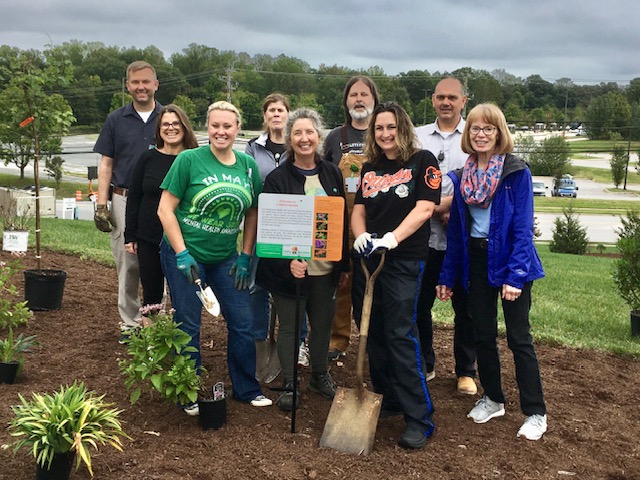
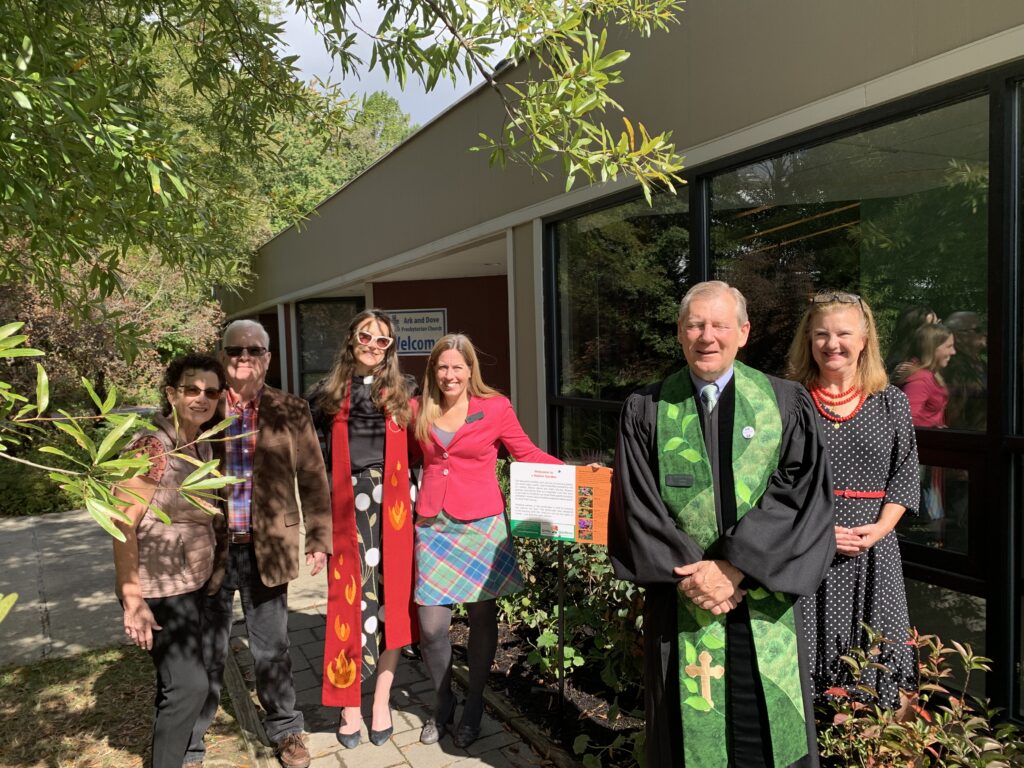
Nativizing Ark and Dove Church
With the collaborative efforts of eight dedicated Ark and Dove volunteers and an 8-man crew from the Maryland Reentry Resource Center, the project achieved remarkable success in planting over 100 native trees and shrubs within a single day, enhancing the church’s landscape both aesthetically and ecologically. Additional support from church volunteers during plant unloading and members of the home school group further enriched the planting and mulching process. Beyond mere planting, the session also addressed essential tasks such as pruning, trimming, and invasive species removal, eliciting multiple compliments from church leadership and congregation members for the enhanced beauty and environmental significance brought by the native plants. As an Earth Care Congregation committed to environmental stewardship, the church proudly displays the Unity Gardens sign near its entrance, symbolizing its dedication to promoting the importance of native plants to its community and visitors. Highlighted in the Ark and Dove Stewardship brochure, the native garden stands as a tangible representation of the church’s ongoing commitment to environmental care and stewardship, serving as a beacon of inspiration for future projects aimed at making the church as green as possible. Reflecting on the experience, the project underscores the value of collaboration with organizations like the Maryland Reentry Resource Center, which provided skilled and efficient workers at no cost, offering valuable insights for future grant recipients seeking to maximize their project’s impact.
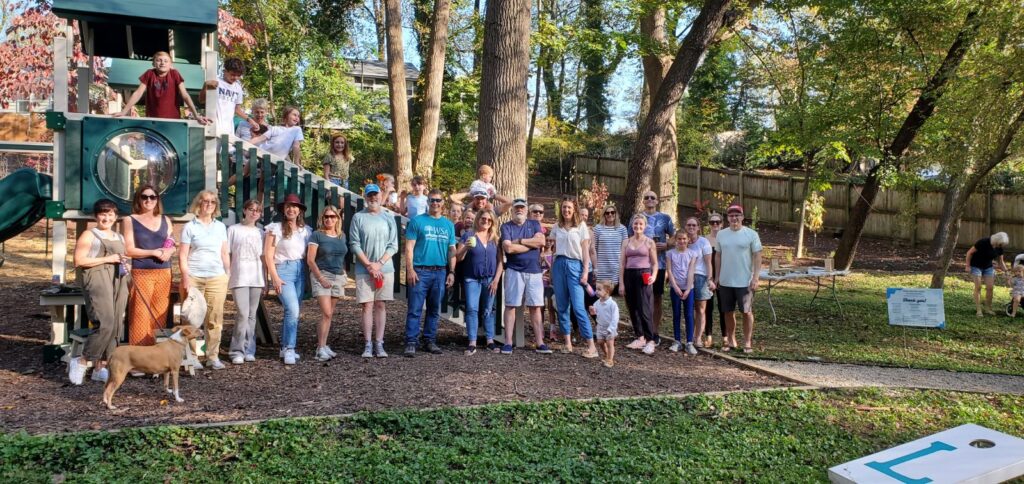
Pendennis Mount Community Park
The project saw the enthusiastic participation of 27 volunteers who embarked on the challenging yet rewarding task of transforming a 5,000 square foot area by eradicating invasive non-native plants such as English Ivy, periwinkle, mustard garlic, and multiflora rose. Through their collective efforts, the invasive species were successfully removed, making way for the reintroduction of native flora. A diverse array of native species, including 30 trees, 84 shrubs, 15 grasses, 55 perennials, 15 ferns, and 20 groundcovers, was meticulously planted, enriching the landscape and promoting biodiversity. Reflecting on the experience, project leaders emphasize the significant workload involved but underscore its undeniable value, highlighting the importance of perseverance and dedication in achieving impactful environmental restoration. As future grant recipients embark on similar endeavors, the project serves as a testament to the transformative power of community-driven initiatives and the enduring benefits of native plant restoration efforts.
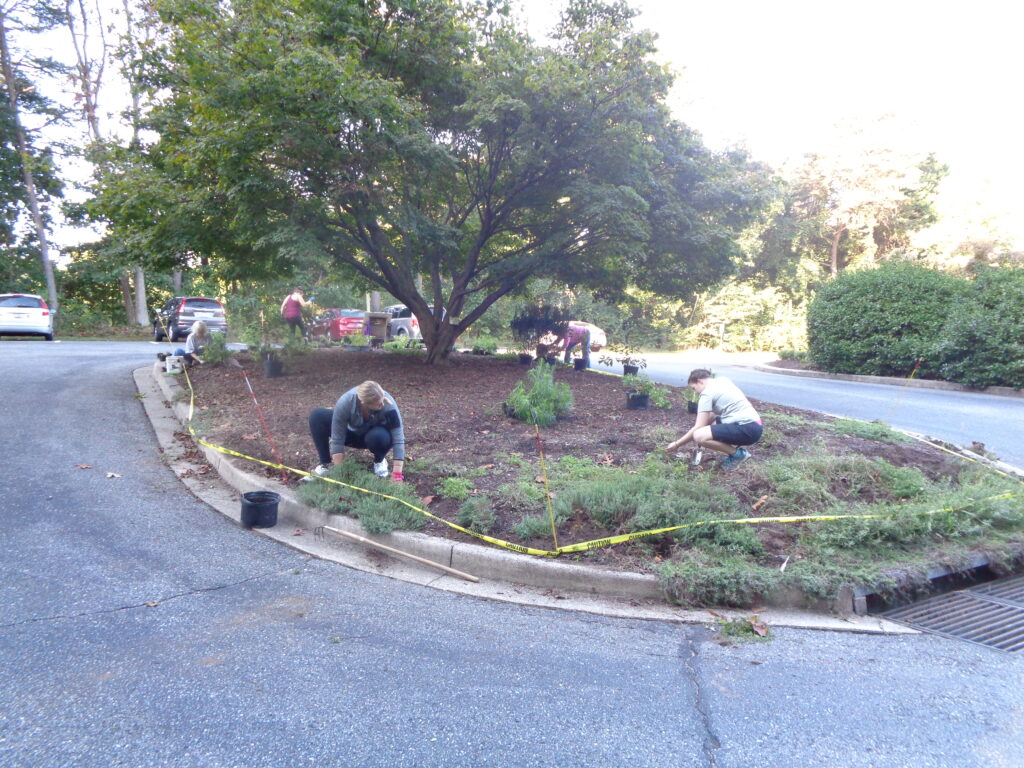
Prince of Peace Presbyterian Church
Blessed with favorable weather and bolstered by the support of the Crofton Garden Club and the Maryland Reentry Resource Center, the planting day at Prince of Peace saw a harmonious collaboration among volunteers from multiple groups, culminating in the successful installation of plants, shrubs, and trees in the parking lot areas and near Fellowship Hall. While initial efforts focused on planting day, ongoing maintenance and watering responsibilities have been seamlessly managed by dedicated Prince of Peace volunteers, with additional support from those unable to attend the planting day. Despite encountering challenges such as delays in ground marking by Miss Dig, the project received widespread praise from the congregation, igniting excitement for future endeavors and prompting discussions about potential future projects around the church grounds. Reflecting on the experience, the project leaders acknowledge the importance of pacing and planning, suggesting the possibility of starting with smaller projects or splitting planting activities over two days to ensure smoother execution. Overall, the project stands as a testament to the power of community collaboration and the transformative impact of native plant initiatives, with eager anticipation for the spring season to witness the full bloom of the newly established areas.
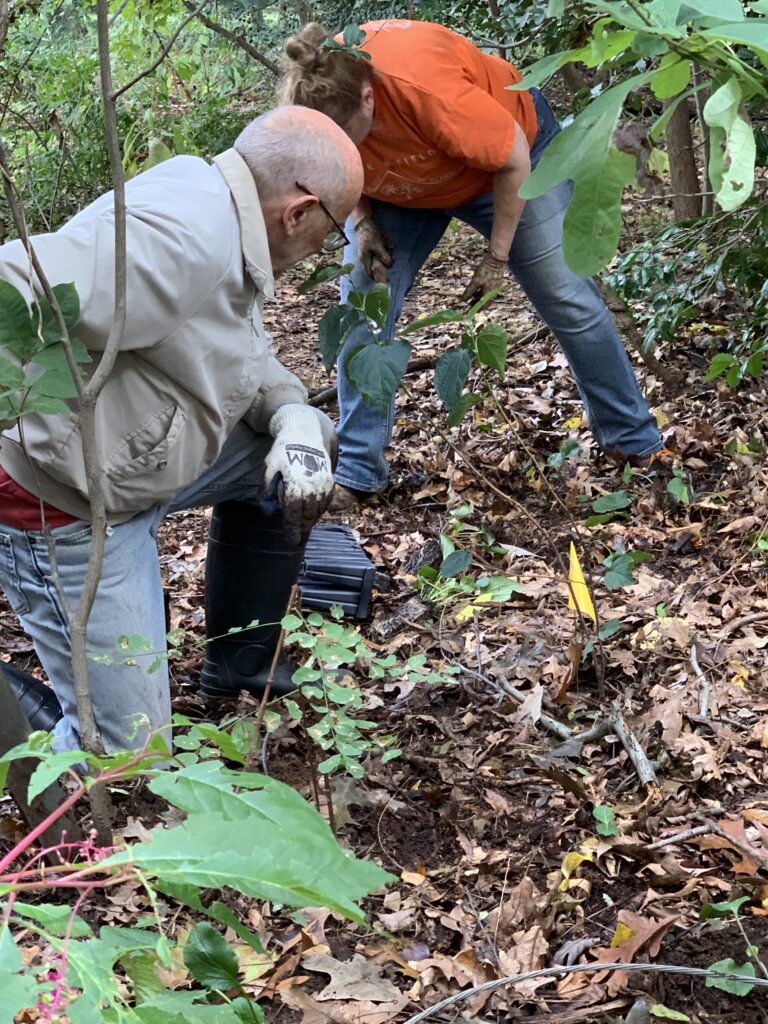
RePlant Cape St. Claire
The RePlant Cape St Claire project emerged as a resounding success, boasting three days of enthusiastic planting efforts with a robust turnout of volunteers, resulting in the successful installation of 282 trees, shrubs, and perennials across two designated sites. With meticulous coordination, trees were procured through the AA County Watershed Stewards Academy Tree Troopers program, while various wholesalers supplied shrubs and perennials, supported by a dedicated volunteer crew who facilitated the reception and transportation of plants to the planting sites. At the Little Magothy beach woodland site, volunteers showcased their commitment over two days, adding a vibrant burst of color to the fall landscape with ferns, asters, goldenrod, and blue mist flower, while efforts at the Serene Ravine focused on combating invasive plants through tree and shrub plantings, supported by the enthusiastic participation of the Habitat for Humanity club from a local high school. The grant funding of $3000 provided invaluable support for the project’s mission to restore habitat, enhance biodiversity, and manage stormwater runoff, with ongoing efforts including pathway mulching and enhancements to showcase recent improvements. Reflecting on the experience, the positive lessons learned underscore the ease of navigating the grant process with Unity Gardens, fostering rewarding partnerships and community connections while inspiring future generations to engage in environmental stewardship.
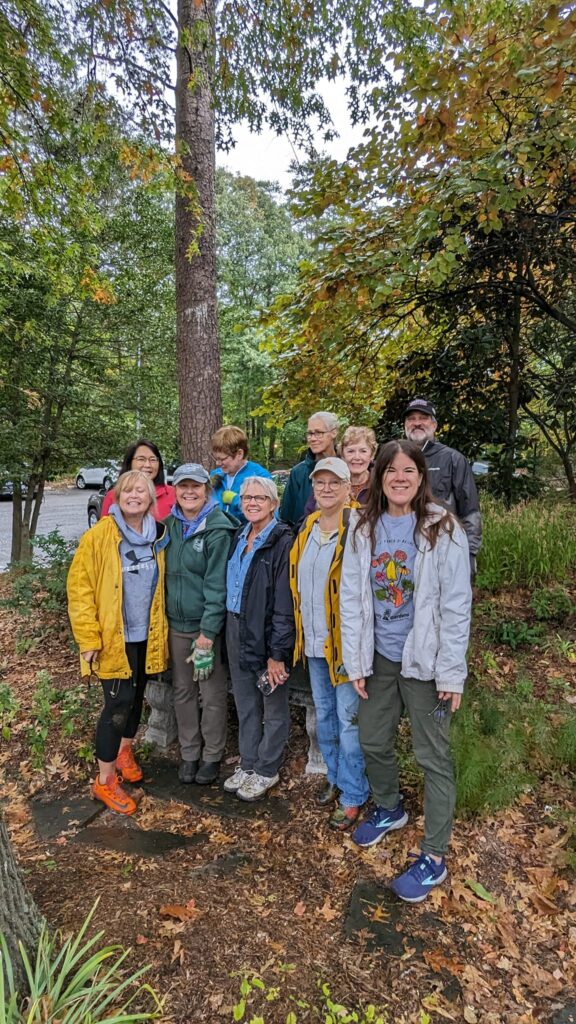
Hollyberry Garden Club
The Hollyberry Garden Club’s initiative to transform the Severna Park Library grounds into a native landscape has flourished into a vibrant community endeavor with dual objectives: to educate library patrons about the significance of native plants while fostering community involvement in garden maintenance and beautification. With meticulous preparation preceding the event, including garden cleanup and procurement of native plants and mulch from the Providence Center, the club laid the groundwork for a successful Just Serve event. Volunteers gathered on the morning of the event to plant native flora across the library grounds, wrapping up ahead of schedule thanks to their dedication and hard work. The event garnered overwhelming support and appreciation from the community, even sparking interest in club membership. While the library grounds have witnessed significant enhancement, ongoing work remains, with the Just Serve Project evolving into an annual tradition, anticipated with enthusiasm each year. Reflecting on lessons learned, the club emphasizes the importance of managing expectations and adapting strategies to ensure maximum volunteer participation and efficiency. As beneficiaries of the Unity Gardens Grant Program, the Hollyberry Garden Club celebrates its ability to expand and maintain the Native Garden at the Severna Park Library, leveraging the program to educate the community on the importance of native plants and watershed protection.
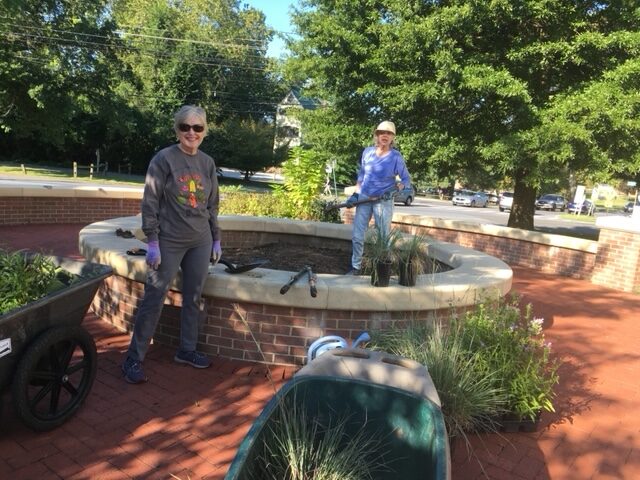
Severna Park Community Center
The Severna Park Community Center Board’s vision for a pollinator garden at the heart of the Community Center courtyard came to fruition with the support of the Unity Gardens grant, delighting both users and board members alike. With the Circular Garden taking shape just in time for the SPCC Fall Festival and the Sidewalk Garden blossoming ahead of the October board meeting, volunteers from the Woods gardening team and the Rehabs worked tirelessly to replace non-native flora with native shrubs, ferns, and huechera, earning heartfelt gratitude from the SPCC Board for the creation of “beautiful native gardens” that further the center’s Maryland Pollinator Pathway initiative. The blooming Jeanna phlox in the Circular Garden served as a vibrant reminder of the importance and beauty of native plants, garnering positive feedback and raising awareness among visitors and staff. Plans to install plant markers and foster a butterfly-friendly environment reflect the center’s commitment to environmental stewardship and community engagement. As part of the Maryland Pollinator Pathway, the Community Center embraces its role in supporting local wildlife while enhancing the beauty and educational value of its surroundings. A member of the SPCC Board expresses gratitude for the Unity Gardens grant, recognizing the enduring impact of native plants in enriching the center’s landscape and ecosystem.
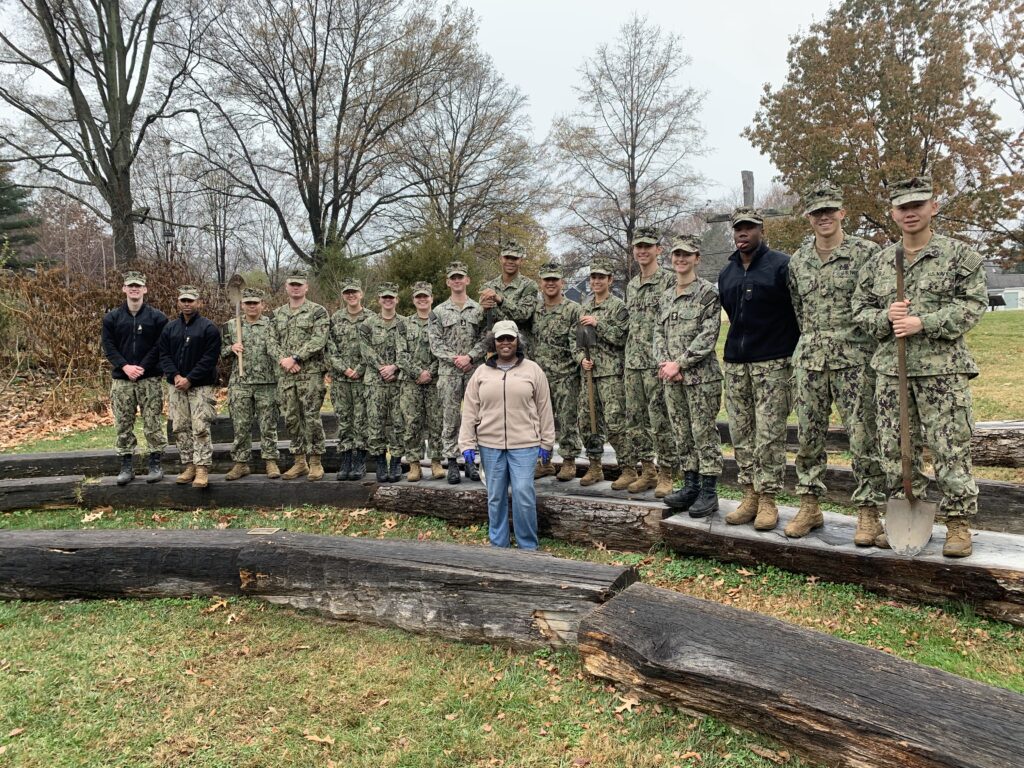
St. Luke’s Episcopal Church
Despite delays in scheduling caused by conflicting commitments, the implementation of the garden project in Eastport proved to be a resounding success. Initially postponed to December 2, 2023, due to challenges in coordinating with the Midshipmen Action Group, the project faced limited plant availability, necessitating strategic substitutions advised by the perennials manager at Babikow Greenhouses. Despite these obstacles, a vibrant volunteer day saw the participation of 16 Midshipmen and 11 Boy Scouts alongside their adult volunteers, resulting in the successful planting of all designated flora and the removal of invasive ivy. However, the delayed arrival of 32 hay-scented ferns, planted by church volunteers the following week, highlighted the importance of proactive nursery reservations for future projects. The experience underscores the resilience and adaptability of the community, as well as the invaluable support provided by Unity Gardens in revitalizing the urban oasis of Eastport since the project’s inception in 2017, with Unity Garden signs proudly marking the woodland pathway.
Friends of Helen Avalynne Tawes Garden, Inc.
The Tawes project showcased a dynamic approach to community gardening through three engaging Planting Days, strategically breaking down tasks for efficient execution. Leveraging the consistent involvement of Master Gardeners who maintain the garden weekly, the project seamlessly integrated with their routine, allowing for convenient task allocation. The inspiration drawn from the Master Gardeners’ Native Plant Festival in September spurred an early start to the Phase III Unity Gardens project, enhancing the vibrant Plant Mural. Preparations involved clearing non-native flora to make space for native beds, alongside strategic relocation and augmentation of existing plantings from previous years. Flexibility in planting schemes, guided by insights gained closer to the October Planting Days, allowed for adaptive decisions such as plant substitutions and additions, facilitated by the accommodating support of the Unity Gardens staff. Furthermore, efficient budget management and advantageous pricing arrangements, including contractor discounts and exemption from sales tax, yielded surplus funds, enabling project expansion and the incorporation of soil amendments and mulch, ultimately enhancing the project’s scope and impact.

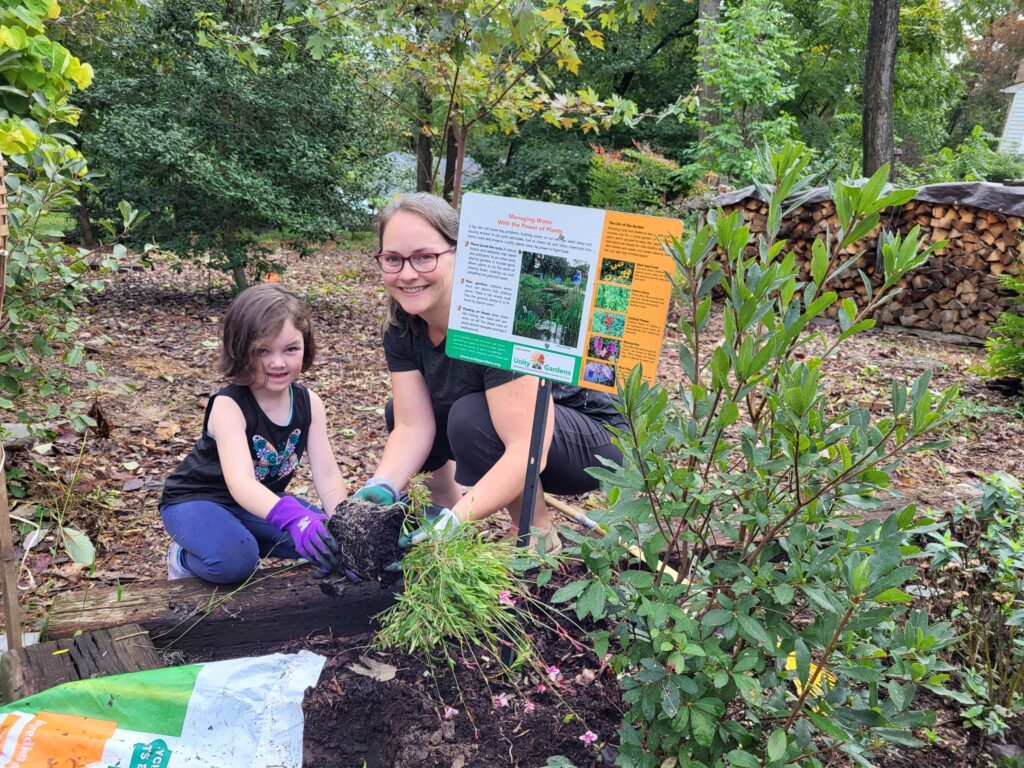
Unifying Natives in Crain West
With a focus on engaging the community, a dedicated group of volunteers was recruited to assist with preparation and planting, culminating in two back-to-back planting days on September 24th and 25th. Utilizing plants primarily sourced from Patuxent Nursery in Bowie, the team benefited from discounts for Unity Grant recipients and valuable expertise on native shrubs and trees. The decision to extend the planting over two days aimed to involve as many children as possible, fostering a sense of pride and ownership in the community spaces among younger members. The collaborative effort resulted in a great turnout, with parents making a day of joining the planting crew with their children. Reflecting on the experience, the report notes minimal negatives, highlighting the importance of advanced planning and collaboration with local resources such as Patuxent Nursery, praised for their clear labeling of native plants with a Maryland flag.
Unitarian Universalist Church of Annapolis
With a team of dedicated volunteers, including seasoned master gardeners and naturalists with a long-standing commitment to the church, alongside the expertise of Emma Devries from Earthstar Gardening and Watershed Stewards Academy staff, the project unfolded with spirited collaboration. Funded by a combination of resources, including the generous support of the Unity Gardens grant, alongside contributions from the church and Watershed Stewards Academy, the project’s grand scale matched its ambition. Preparation of the expansive planting area was skillfully executed by Earthstar Gardening, leading to the project’s installation on October 14, 2023, with a bustling team of 12 volunteers, including the esteemed presence of Jeff Popp from Watershed Stewards. The transformation of the previously dense thicket into a picturesque and accessible pathway elicited enthusiastic reception from the congregation, affirming its success. Lessons learned underscore the invaluable role of expert guidance, exemplified by Emma Devries, while positive experiences with the Unity Gardens Grant staff highlight the seamless application process. In conclusion, the project’s realization stands as a testament to the power of community collaboration and environmental stewardship, echoing the sentiment that the grant made the vision a reality, resulting in a delightful and fulfilling finished product.
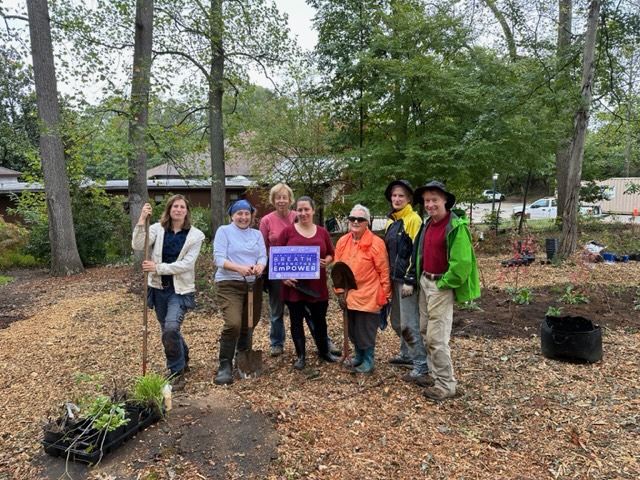
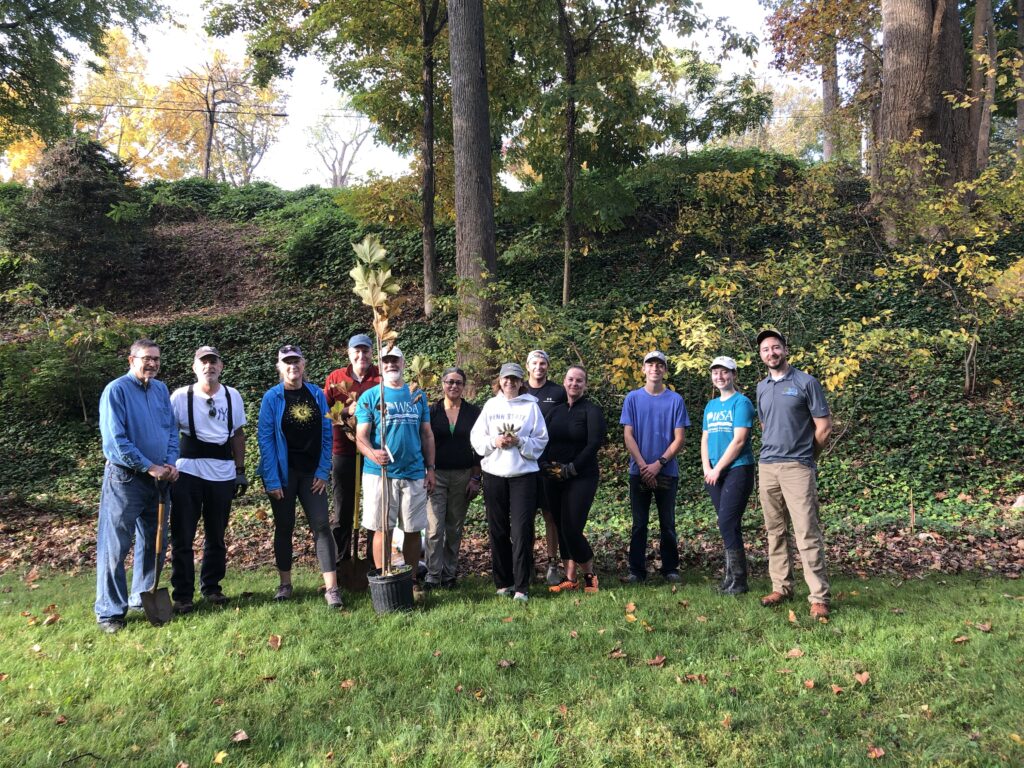
Cape St. John Citizens Association: Stormwater Remediation
Over twenty-five enthusiastic community volunteers spearheaded the Cape Saint John Citizens Association’s conservation project. The initiative, supported by a grant from the Watershed Stewards Academy, commenced with extensive community outreach through flyers, social media, and direct communication, garnering widespread participation. Leveraging his affiliation with the Watershed Stewards Academy, one community member secured funding, preferential pricing for trees, and valuable support and advice from professionals. With Susan Nugent’s assistance, the team procured perennial plants and constructed rain barrels, enhancing the project’s sustainability and impact. Despite challenges like adverse weather, volunteers demonstrated remarkable dedication, planting trees, installing rain barrels, and preparing the site with mulch and compost. The project’s success, marked by the planting of additional trees and the creation of a vibrant community space, underscored the collective effort and generosity of the volunteers and sponsors, ultimately enriching the neighborhood’s ecological and social fabric.
